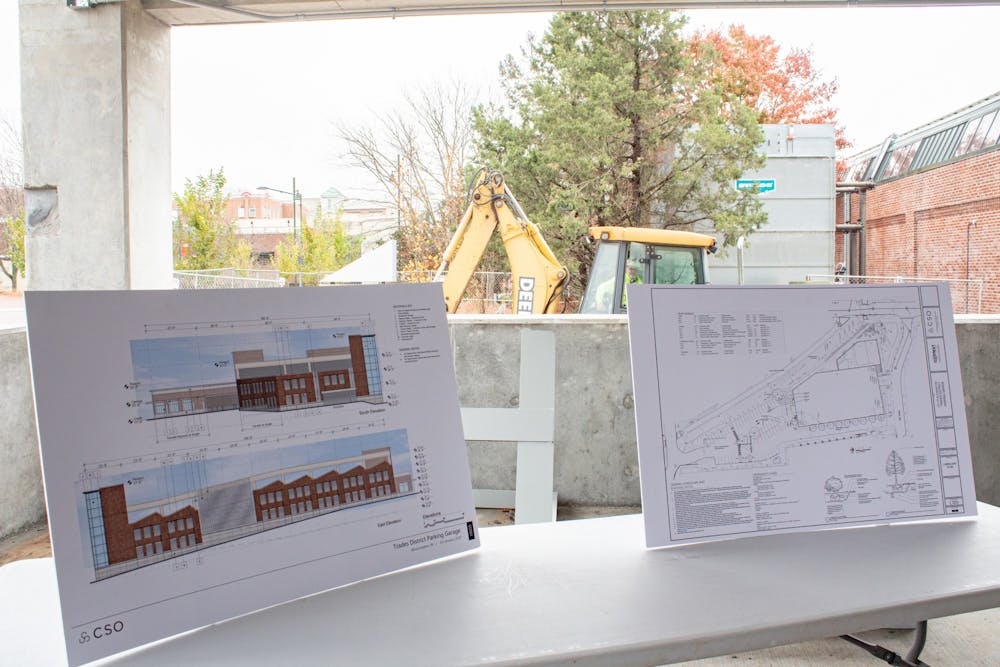Construction is underway on the Trades District parking garage located off West Tenth Street and is scheduled to be finished next spring. The garage will be outfitted with solar panels and artistic visuals.
Project manager Josh Scism estimates the garage, which is near the Showers City Hall building, can accommodate 350 to 370 cars.
The garage will be the first of its kind in Indiana to be awarded the Parksmart sustainability certification. The project team hopes they can primarily support the garage’s energy needs through solar panels that will be installed on the top level. There will also be 10 charging ports for electric vehicles.
Alex Crowley, director of the Department of Economic and Sustainable Development, said he understands the number may seem high for the Bloomington area, but he anticipates more need for electric ports in the future.
“We decided to go big to start,” Crowley said.
Crowley said the garage is being built to support the new businesses that move into the area. He anticipates the arrival of more office buildings and firms.
“What we’re trying to attain in Bloomington is something that really hasn’t existed before: dense office space,” Crowley said.
Companies in proximity to the garage such as The Mill, a nonprofit coworking center, hope to see more entrepreneurial growth and viable businesses.
“We want them not only to grow here in Bloomington, but to stay here,” said Melissa Ward, head of partnerships and initiatives at The Mill.
In addition to the parking garage, there is space allotted in the construction for public restrooms and bike parking.
The city accepted concepts for the garage's art installation in July. Artist and educator Esteban García Bravo submitted his proposal for the exhibit among more than 100 applications before his idea was chosen. His proposal is inspired by the colorful, textured tiles from Incan culture and his own self-reflection over the past year. He was struck by the words of an Amazonian healer, “each day is a color.”
The exhibit features about 650 1-foot square tiles, called tocapus, along both stairwells in the garage. The 3D tiles will be illuminated by a multicolored LED system and will be visible from the outside of the structure through the glass exterior.
Through his work, García Bravo hopes garage patrons will become more mindful of the present and are inspired by the themes of ever-changing emotions.
“The project started with my own journey,” García Bravo said. “All feelings are temporal and, with time, things can change or perhaps get better.”
According to his proposal, García Bravo plans to include collaboration with contemporary indigenous communities from Indiana in the project. He is currently working with Nicky Belle, the director of IU’s First Nations Educational Center, to include input from the community.




